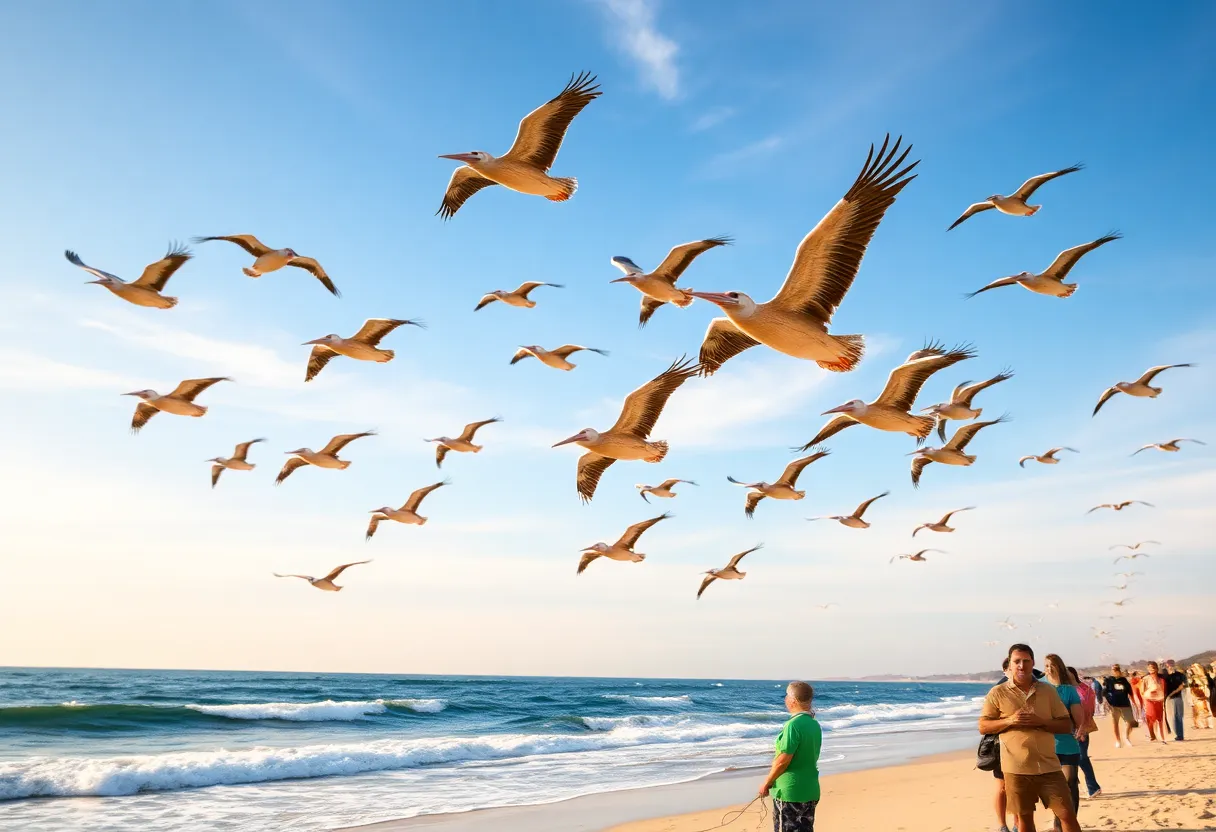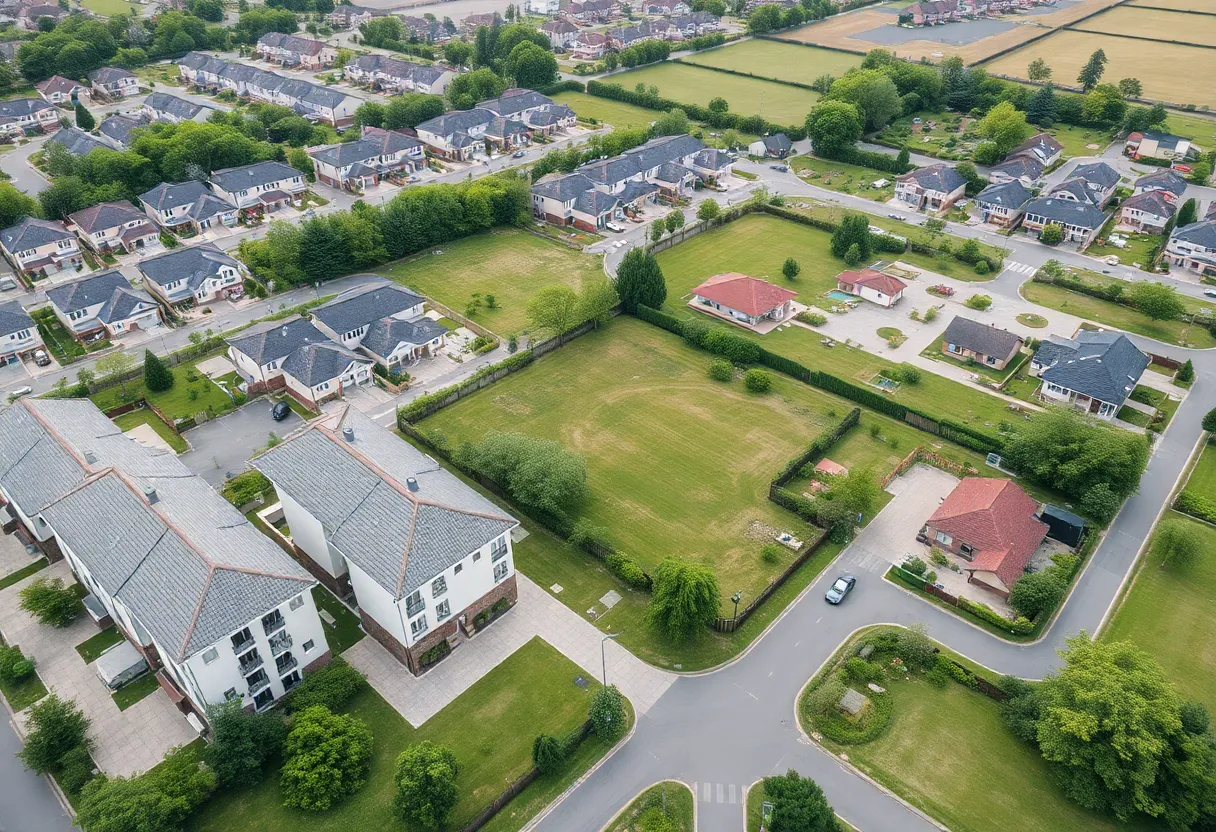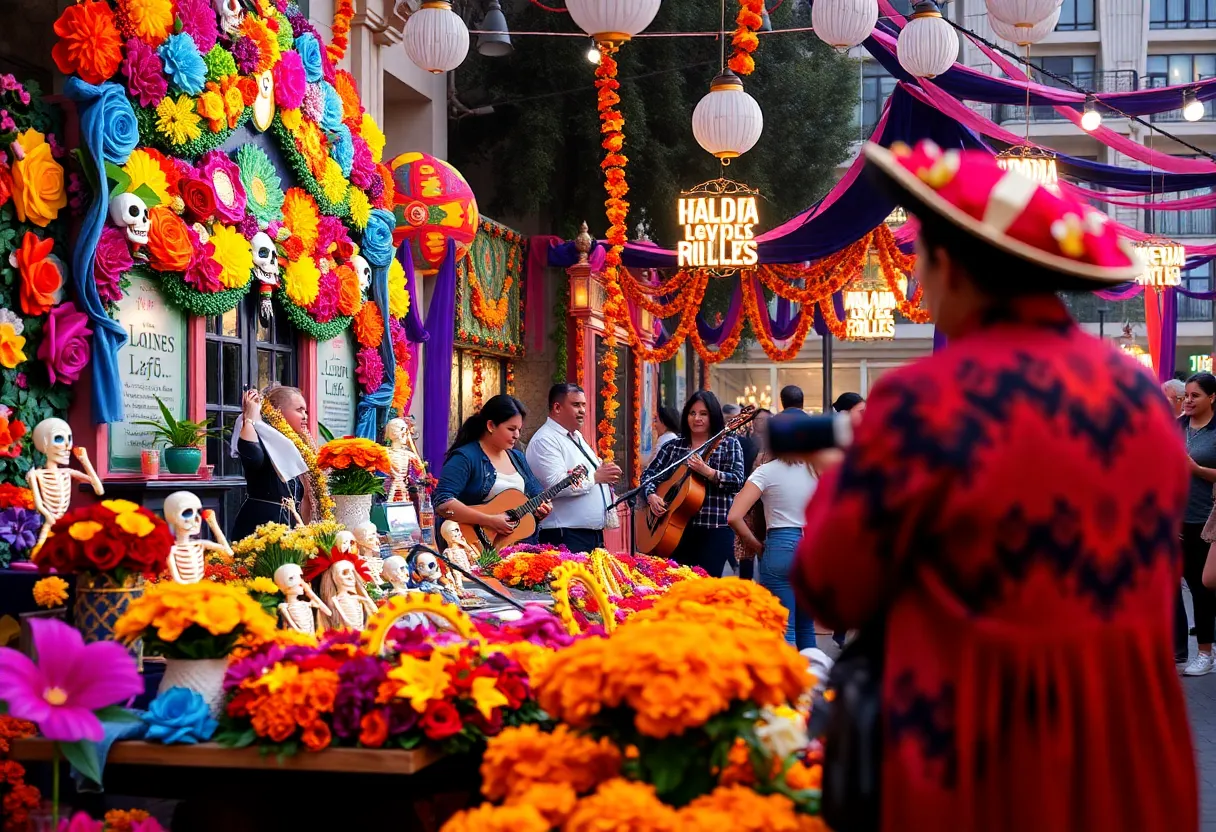News Summary
A flock of 13 brown pelicans has been successfully rehabilitated and released back into the wild in Huntington Beach after suffering from domoic acid poisoning linked to a toxic algal bloom. This year’s algal bloom has been deemed the deadliest since 2015 and has impacted various marine species along the West Coast. The pelicans were released amidst community support, but ongoing concerns about marine life health remain as harmful algal blooms continue to pose a threat to ecosystems.
Huntington Beach, California – A flock of 13 brown pelicans was successfully released back into the wild on Wednesday morning after completing rehabilitation for domoic acid poisoning due to a toxic algal bloom that affected a large coastal region. This year’s algal bloom has been identified as the deadliest since 2015, impacting marine life from Central California to Alaska.
The bloom, which began in January 2024, has caused widespread damage to various species, including sea lions and numerous seabird populations. The pelicans were treated at the Wetlands and Wildlife Care Center in Huntington Beach, where they made a full recovery prior to their release. The release event took place just south of the Huntington Beach pier, attracting local community members who gathered to witness the moment.
Junior lifeguards from Huntington Beach participated in the event by assisting in the release. They unzipped the cages containing the pelicans, allowing the birds to walk out onto the shoreline. Following their release, most of the pelicans took flight into the sky, but two remained on the sand and were subsequently returned to the center for additional care.
The rise of domoic acid poisoning in marine animals is alarming, as the toxin is highly dangerous and can lead to seizures and erratic behaviors in creatures that consume contaminated fish. This year marks the fourth consecutive year of dangerous algal blooms in Southern California, with troubling reports of sickened sea lions displaying aggressive behaviors due to the poisoning.
The Marine Mammal Care Center has recognized this year’s algal bloom as particularly threatening, labeling it the longest and deadliest in recent history. The Wetlands and Wildlife Care Center reported rescuing nearly 200 seabirds due to the phenomenon, highlighting a significant increase in the need for animal rehabilitation in the area.
As of early June, there has been a decline in levels of toxic algae along Southern California’s coastline, but the risk to marine life continues to persist. Harmful algal blooms are typically driven by various environmental factors, including water and wind patterns, nutrient overproduction, and the overarching impacts of climate change.
Experts believe that climate change is contributing to the increased frequency and severity of these toxic algal blooms. Warmer ocean temperatures and higher levels of carbon dioxide facilitate the proliferation of harmful algae, posing serious risks to marine ecosystems. Residents and visitors to the area have been advised to refrain from approaching sick or stranded animals and to report such instances to marine mammal care organizations for appropriate assistance.
As local efforts continue to combat the consequences of the algal bloom, the successful release of the 13 brown pelicans serves as a hopeful reminder of the community’s commitment to wildlife rehabilitation and the urgent need for ongoing vigilance in the face of environmental challenges.
Deeper Dive: News & Info About This Topic
HERE Resources
Twelve Pelicans Released After Recovery from Domoic Acid Poisoning
WWCC Faces Crisis as Wildlife Distress Peaks Amid Toxic Algae Bloom
Additional Resources
- Los Angeles Times: Brown Pelicans Released After Deadly Algal Bloom
- Wikipedia: Harmful Algal Bloom
- CBS News: Brown Pelicans Domoic Acid Poisoning Released Huntington Beach
- Google Search: toxic algal bloom
- LAist: Unprecedented Toxic Algae Bloom Killing Southern California Wildlife
- Google Scholar: toxic algae bloom
- Los Angeles Times: Adult Pelicans Falling Victim to Toxic Algae Bloom
- Encyclopedia Britannica: domoic acid
- ABC News: Toxic Algae Bloom Killing Marine Life Southern California
- Google News: marine life algal bloom

Author: STAFF HERE COSTA MESA WRITER
The COSTA MESA STAFF WRITER represents the experienced team at HERECostaMesa.com, your go-to source for actionable local news and information in Costa Mesa, Orange County, and beyond. Specializing in "news you can use," we cover essential topics like product reviews for personal and business needs, local business directories, politics, real estate trends, neighborhood insights, and state news affecting the area—with deep expertise drawn from years of dedicated reporting and strong community input, including local press releases and business updates. We deliver top reporting on high-value events such as the OC Fair, Concerts in the Park, and Fish Fry. Our coverage extends to key organizations like the Costa Mesa Chamber of Commerce and Boys & Girls Clubs of Central Orange Coast, plus leading businesses in retail, fashion, and technology that power the local economy such as Vans, Experian, and South Coast Plaza. As part of the broader HERE network, including HEREAnaheim.com, HEREBeverlyHills.com, HERECoronado.com, HEREHollywood.com, HEREHuntingtonBeach.com, HERELongBeach.com, HERELosAngeles.com, HEREMissionViejo.com, HERESanDiego.com, and HERESantaAna.com, we provide comprehensive, credible insights into California's dynamic landscape.





